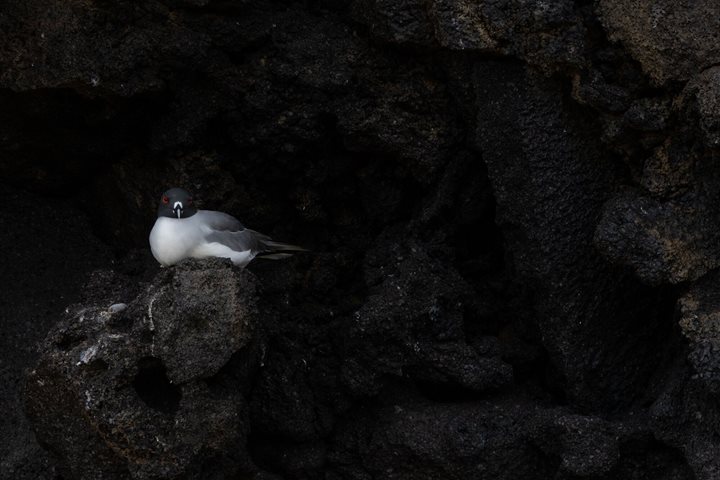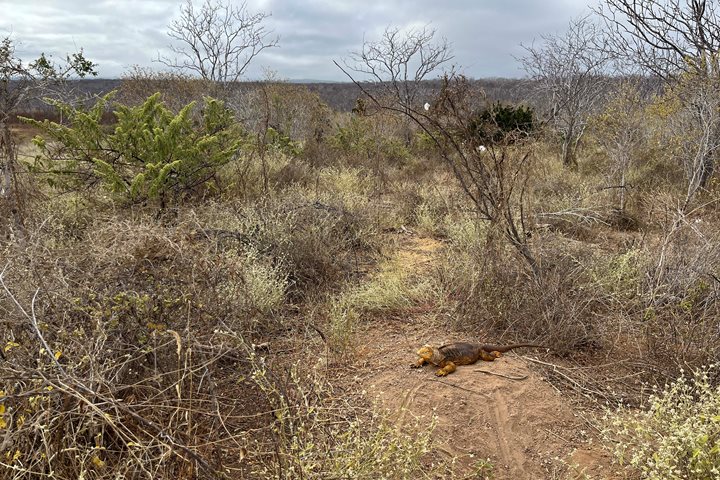Puerto Ayora is the largest town in the Galapagos and was the starting point of our adventure today. This morning, we visited the Charles Darwin Research Station and had the chance to see research in progress to save some of the critical endangered Galapagos tortoises. The famous, extinct “Lonesome George” tortoise was on display as a stark reminder of the impact that careless humans can have on the environment. However, the research station is conducting one of the most successful reintroduction programs in the world with great success. The afternoon was spent in the highlands of Santa Cruz Island with a visit to a sustainable coffee and sugar plantation. One of the highlights of the trip was the chance to see giant Galapagos tortoises in their natural environment. There were dozens of tortoises, ranging in all sizes, including some of the largest on the island, weighing in at over 400 pounds. It is humbling to see these magnificent creatures thriving in the wild and know that the residents are doing everything to protect these Enchanted Islands.
- Daily Expedition Reports
- 29 Sep 2022
Santa Cruz Island, 9/29/2022, National Geographic Endeavour II
- Aboard the National Geographic Endeavour II
- Galápagos
Rich Reid, National Geographic Photography Expert
Award-winning photographer and filmmaker Rich Reid has specialized in environmental and adventure photography for over two decades. On assignment with National Geographic Adventure magazine, he cycled Alaska’s Inside Passage by ferry and explored Cal...
Read MoreShare Report
Galápagos Aboard National Geographic Endeavour II
VIEW ITINERARYRelated Reports
10/6/2022
Read
National Geographic Endeavour II
Bartolome Island & Sombrero Chino
On National Geographic Endeavour II today, we explored Bartolome, home of a small colony of Galapagos penguins. Bartolome is one of the youngest islands, and it is located next to Santiago Island in the central part of the archipelago. After an amazing sunrise, we went ashore for a walk, and we were transported back to a time when the land was newly formed. We began our day by hiking to the top of a tuff cone known as the islet of Bartolome, named after the First Officer of The Beagle . Walking on this young island allowed us to understand the formation and volcanism of the Galapagos Islands. The rocks are a great way to understand the area and its geology. We spotted a few lava lizards and painted locusts, some of the very few animals on this island. As we reached the top, we had a great view. Our guests enjoyed the magnificence of Pinnacle Rock. After we visited one of the most iconic geological formations of the Galapagos, our breakfast was enhanced by dramatic views of the impressive volcanic landscape. We visited the beach near Pinnacle Rock, where we enjoyed how the sun made the sand sparkle due to a concentration of silica. Later, we went snorkeling along the channel between Santiago and Bartolome Islands. Many of our guests spotted whitetip reef sharks and very colorful parrotfish. The landscape was beautiful with lots of sea stars. We enjoyed the chance to be surrounded by Galapagos penguins and feel accepted as part of this environment. After a delicious Mexican lunch, we had lectures on the photography of reptiles and Darwin. Afterwards, we went to Chinese Hat Islet to snorkel from the Zodiacs. The area is home to a small colony of Galapagos penguins. In a sandy-bottomed, sheltered channel, our guests enjoyed swimming with whitetip reef sharks, rays, and many fish. It was a nice and sunny afternoon. After snorkeling, we had the chance to explore the unique, small volcano that formed an island in front of Santiago on a sunset Zodiac ride. After a spectacular day full of activities in the field, we returned on board. Every day in the Galapagos is an opportunity to reconnect with the beauty of nature through unbelievable encounters!
10/5/2022
Read
National Geographic Endeavour II
Cerro Dragón, Santa Cruz Island
Today, National Geographic Endeavour II visited Cerro Dragon, located on the north part of Santa Cruz Island. We found one of the largest colonies of land iguanas. During our hike, we spotted the iguanas all around the trail. Some basked on the vegetation, and others were active. We saw the zigzag head movement they use to protect their territory and impress females. An Ecuadorian buffet lunch was set up in the dining room. We started with the traditional ceviche and ended with tres leches for dessert! We enjoyed snorkeling and Zodiac rides. We observed wildlife all over the place, including spotted eagle rays, sharks, blue-footed boobies, great blue herons, marine iguanas, and hundreds of other animals. They all reminded us why the Galapagos is so special.







